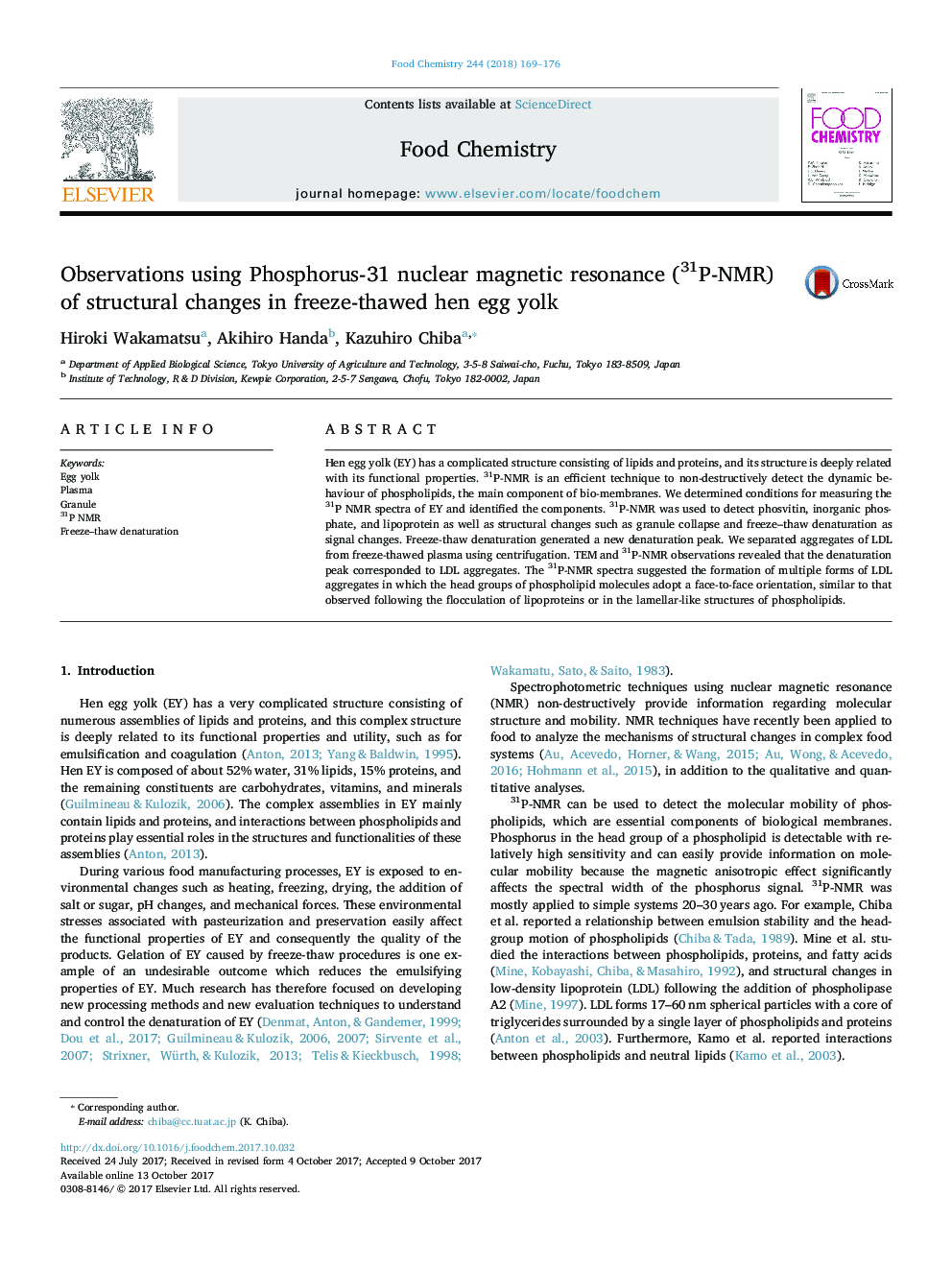| Article ID | Journal | Published Year | Pages | File Type |
|---|---|---|---|---|
| 5132400 | Food Chemistry | 2018 | 8 Pages |
â¢31P-NMR can be used to detect structural changes in EY.â¢Granule collapse and freeze-thaw denaturation is easily monitored using 31P-NMR.â¢Granules show high tolerance against freeze-thaw denaturation compared to plasma.â¢Raw LDL does not participate in gelling and it can be separated by centrifugation.â¢LDL aggregates force the head groups of phospholipid into a face-to-face orientation.
Hen egg yolk (EY) has a complicated structure consisting of lipids and proteins, and its structure is deeply related with its functional properties. 31P-NMR is an efficient technique to non-destructively detect the dynamic behaviour of phospholipids, the main component of bio-membranes. We determined conditions for measuring the 31P NMR spectra of EY and identified the components. 31P-NMR was used to detect phosvitin, inorganic phosphate, and lipoprotein as well as structural changes such as granule collapse and freeze-thaw denaturation as signal changes. Freeze-thaw denaturation generated a new denaturation peak. We separated aggregates of LDL from freeze-thawed plasma using centrifugation. TEM and 31P-NMR observations revealed that the denaturation peak corresponded to LDL aggregates. The 31P-NMR spectra suggested the formation of multiple forms of LDL aggregates in which the head groups of phospholipid molecules adopt a face-to-face orientation, similar to that observed following the flocculation of lipoproteins or in the lamellar-like structures of phospholipids.
